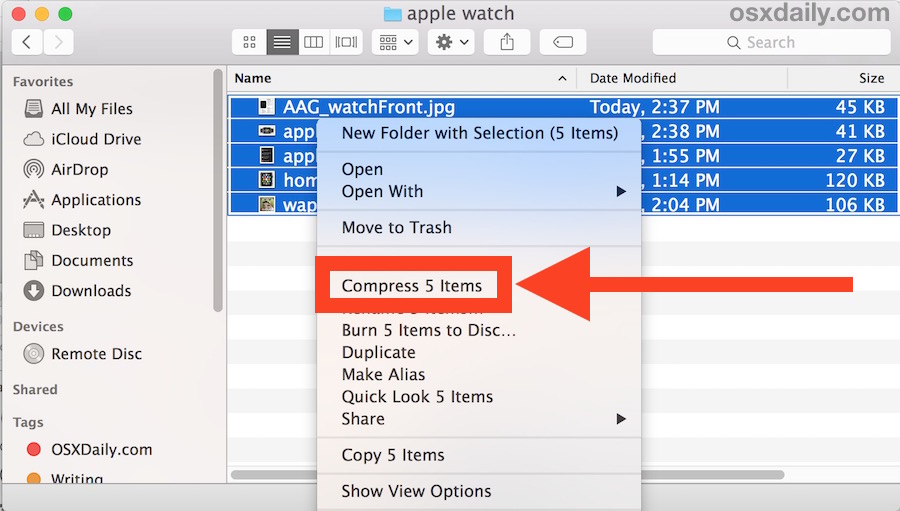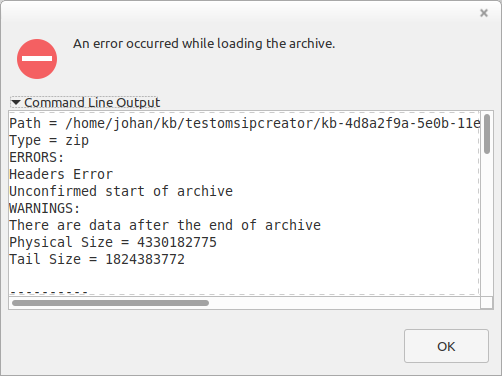Jul 22, 2021 Zip multiple files on mac; A zip file will be created with the name “Archive.zip“ How to Create a Password-Protected ZIP File on a macOS. Hold Command and Press Space to open Spotlight, type Terminal to search and Enter; Change directory to where files are located by using the command: cd desktop (you can put your path in place of the. Zip is a compression and file packaging utility for Unix, VMS, MSDOS, OS/2, Windows 9x/NT/XP, Minix, Atari, Macintosh, Amiga, and Acorn RISC OS. It is analogous to a combination of the Unix commands tar (1) and compress (1) and is compatible with PKZIP (Phil Katz's ZIP for MSDOS systems). A companion program ( unzip (1L)) unpacks zip archives.

- Loop through files in Mac terminal. Ask Question Asked 6 years, 1 month ago. Active 1 year ago. Viewed 35k times 23 4. I am trying to write a simple loop that will.
- To delete all the files and sub-folders in a directory named 'oldfolder,' the command is rm -R oldfolder and to confirm each file should be deleted, rm -iR oldfolder. Just because you can use Terminal to delete files on your Mac doesn’t mean you should. It’s a relatively blunt instrument, deleting only those files and folders you specify.
- Sudo apt-get install zip. I see from man zip that it allows me to use a file list: -@ file lists. If a file list is specified as -@ Not on MacOS, zip takes the list of input files from standard input instead of from the command line. For example, zip -@ foo. So I created zip.lst which looks like this.

Since macOS is based on Unix there are a number of ways to compress files and folders within the filing system using Unix based application code, below are a few options using the Terminal or command line interface (cli). The default command line application interface in macOS is the Terminal and is stored in /Applications/Utilities.

File and folder compression saves on file size and ensures the contents are captured and delivered or stored as one monolithic file. A compressed file which contains files and folders is generally referred to as an archive. Here are some built-in compression applications you can use including zip, tar, gz, bz2, gz and dmg.
ZIP – Cross Platform
First up is ZIP one of the most commonly used compression techniques used across all platforms
To compress
To extract
If you want to make a zip without those invisible Mac resource files such as “_MACOSX” or “._Filename” and .ds store files, use the “-X” option in the command so:
TAR.GZ – Cross Platform
Second up is TAR, an old favorite on Unix/Linux – you add the GZ for the compression – compresses tighter than zip
To compress

To extract
TAR.BZ2 – Cross Platform
A variation on TAR GZ but with better compression than both tar.gz and zip.
To compress
To extract
GZ
Without the tar
To extract
DMG – macOS Only
This one is macOSnative only – for a GUI interface use /Applications/Utilities/Disk Utility – for command line use:
To create
To mount
To view
To Eject
Open Multiple Zip Files
You can also use a number of different formats for creating a .dmg
Zip Files In Terminal
- UDZO – Compressed image (default)
- UDRO – Read-only image
- UDBZ – Better compressed image
- UDRW – Read/Write image
- UDTO – DVD disk image
Mac Terminal Zip Multiple Files 1
That’s the low down, the more common compression packages available will typically be covered in one of the above.